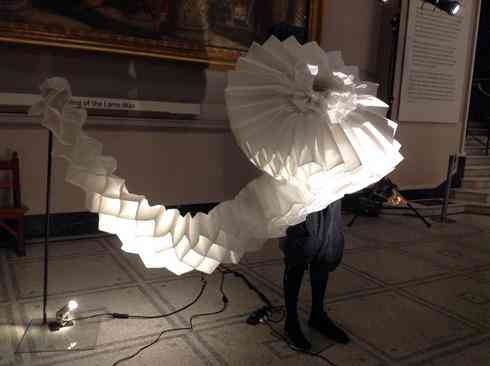Shakespeare Tribes
Shakespeare Tribes
Report by Helen Gush from the Victoria and Albert Museum
May 2 – 4, 2014
Shakespeare Tribes took place on the final weekend of the V&A's Shakespeare Festival, organised by the Theatre and Performance department alongside its exhibition Shakespeare: Greatest Living Playwright, which commemorates 450 years since Shakespeare's birth.
Costume design students from London College of Fashion, Central Saint Martins, Bristol Old Vic Theatre School and the Edinburgh College of Art worked alongside the Theatre and Performance department to present their work which explored the use of costume and masks to create communal, 'tribal' identity, using Shakespeare plays as inspiration. On Friday 2 May these tribes claimed 'territories' in the museum, creating a living exhibition in the public space. The 'tribes' were defined by their specific dress, but also by specific movement or behaviour (performance) codes. They questioned not only the politics of public space and our living environment but also fantasy and theatricality as potential expressions of political positions and acts. Over the weekend 3 to 4 May the costumes remained on display in the galleries and the students stood with the work in order to talk to members of the public about what they had achieved.
Sodja Lotker was invited to judge the best student submission and chose Shakespeare Fools. Oliver and Caroline will bring their work to Prague 2015. You can read the findings by Sodja Lotker bellow.
Reflections
We felt that the event was a great success. The students produced work of exceedingly high quality. We believe it really helped that they were working competitively, with the final goal of getting to show their work in Prague. The event was productive, too, in developing working relationships between the museum and higher education institutions. The museum provides a platform for budding designers to showcase their work and thereby fosters relationships with the new generation of creative practitioners.
The students designed their costumes in response to both the notion of 'tribes' and to the museum space. In performance, the Tribes demonstrated a real sensitivity to the museum environment and the public within it. All the Tribes successfully encouraged the public to engage with the museum and its objects in a different way. It was a real pleasure to observe.


.jpg%3F1445861226)
